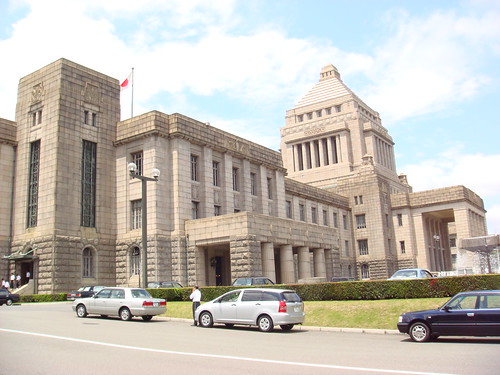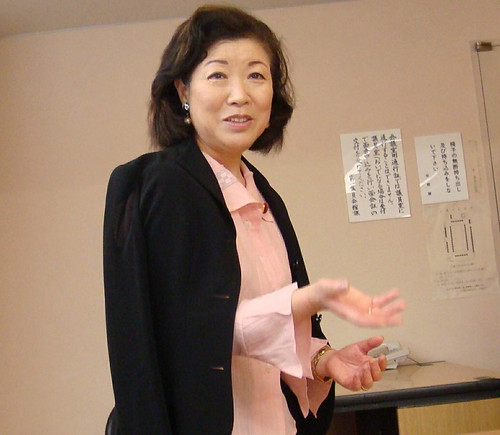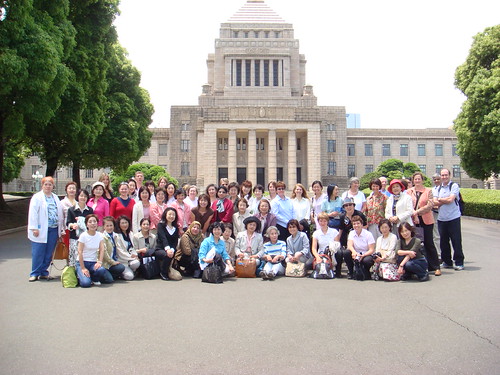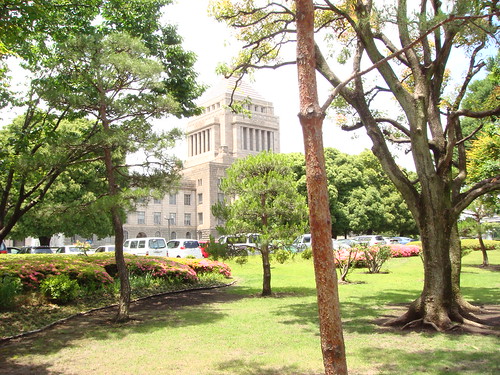The Inner Gardens of Meiji Shrine (Tokyo, Japan)
![Meiji Shrine's Inner Garden (Tokyo) [1]](http://farm2.static.flickr.com/1012/533859335_527ad6e60a.jpg)
This is the path entering the Inner Gardens. This has always been one of my most favorite quiet places in the downtown area of Tokyo.
![Meiji Shrine's Inner Garden (Tokyo) [2]](http://farm2.static.flickr.com/1346/533859403_4072d96c8f.jpg)
This is the Kakuun-Tei (Tea House). The former building was built in 1900 by His Majesty the Emperor Meiji for Her Majesty the Empress Shoken. Unfortuantely during World War II, the original structure was destroyed by fire. This building was reconstructed in 1958.
![Meiji Shrine's Inner Garden (Tokyo) [3]](http://farm2.static.flickr.com/1332/533859409_f8d7013954.jpg)
This view is overlooking the lake towards the path which leads up to the famous Meiji Shrine's iris gardens.
![Meiji Shrine's Inner Garden (Tokyo) [4]](http://farm2.static.flickr.com/1258/533859429_a29e3c8133.jpg)
In late May and early June, the famous Meiji Shrine's iris gardens display their beautiful Japanese iris.
![Meiji Shrine's Inner Garden (Tokyo) [5]](http://farm2.static.flickr.com/1017/533859515_5a8a88dc86.jpg)
The Kiyomasa-Ido (well) for the Inner Gardens at Meiji Shrine was built by Lord Kiyomasa during the Edo period. This well is located at the South Pond. It provides year-round the pure water.
![Meiji Shrine's Inner Garden (Tokyo) [6]](http://farm2.static.flickr.com/1061/533859553_47369fe2eb.jpg)
While walking back from the well, I caught an amazing glimpse of the South Pond through the trees.
![Meiji Shrine's Inner Garden (Tokyo) [7]](http://farm2.static.flickr.com/1438/533768120_da3a859aee.jpg)
Here is the look-out for everyone to enjoy watching the colorful carp.
![Meiji Shrine's Inner Garden (Tokyo) [8]](http://farm2.static.flickr.com/1292/533768138_a9f00f8993.jpg)
These are some of the colorful carp that are swimming in the Pond.
![Meiji Shrine's Inner Garden (Tokyo) [9]](http://farm2.static.flickr.com/1211/533897237_5a1b33ee86.jpg)
As I was walking turning to return to the Entrance, I caught a glimpse of the gorgeous trees that surround the Pond to my left side.
more later...

![Meiji Shrine (Tokyo) [1]](http://farm2.static.flickr.com/1374/533138633_3f6743c3a6.jpg)
![Meiji Shrine (Tokyo) [2]](http://farm2.static.flickr.com/1075/533138643_269c7ac6fd.jpg)
![Meiji Shrine (Tokyo) [3]](http://farm2.static.flickr.com/1422/533138665_e9032e0950.jpg)
![Meiji Shrine (Tokyo) [4]](http://farm2.static.flickr.com/1314/533138667_bc958066bf.jpg)
![Meiji Shrine (Tokyo) [5]](http://farm2.static.flickr.com/1036/533138681_751c482f1c.jpg)
![Meiji Shrine (Tokyo) [6]](http://farm2.static.flickr.com/1195/533138709_865b69f8fb.jpg)
![Meiji Shrine (Tokyo) [7]](http://farm2.static.flickr.com/1235/533145321_6976b784a4.jpg)
![Meiji Shrine (Tokyo) [8]](http://farm2.static.flickr.com/1189/533145337_be7fc85d08.jpg)
![Meiji Shrine (Tokyo) [9]](http://farm2.static.flickr.com/1406/533145361_e9f5c13358.jpg)















